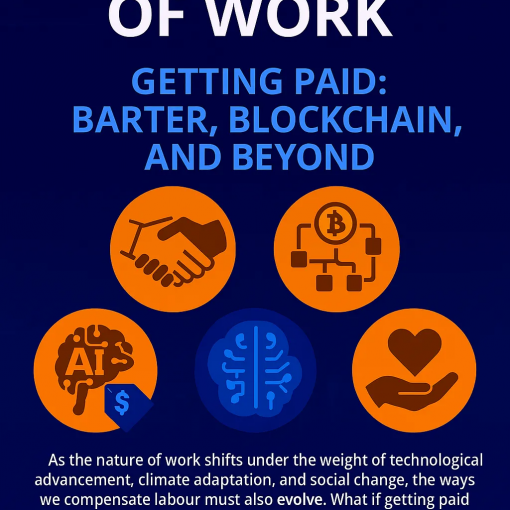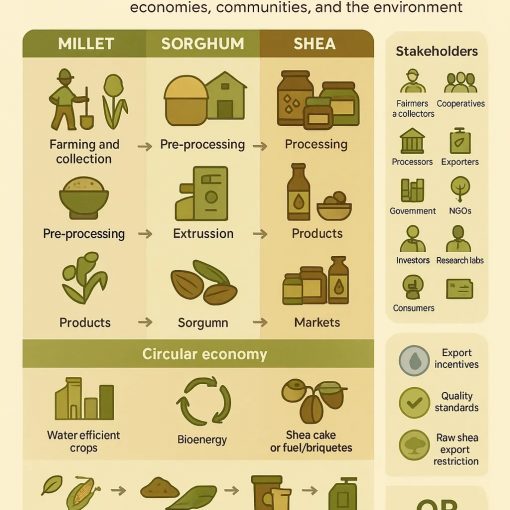I have read and some interesting articles on using recycled material or alternative materials for building and construction and wondered. What would it take to make a proposal for using Recycled Plastic hollow building blocks defined below can this be an economic alternative to supplement to regular building blocks and what would be the process to investigate the viability
Recycled Plastic hollow blocks
Recycled Plastic hollow building blocks are made from recycled Plastic to form a shell. It is filled. with a slurry\ aggregate made of cement or an alternative binder and a blend of desert sand, hemp or wood waste and recycled plastic (a coarse aggregate) mixed and compressed (and capped with a cover?) then dried. The Recycled Plastic hollow blocks will have micro holes on its surface to enable drying. The premise is to reduce the cost of basic building as a supplement and not initially as a replacement. The cost reduction is not to building complete structures out of it but to supplement traditional or alternative builds. This saving is the economic replacement value of substitution. It should be noted that ReviveBlocks (or TerraPlast Bricks, RecycleCore Blocks, EcoFiller Blocks etc are placeholder names)
Building blocks are defined: concrete block is primarily used as a building material in the construction of walls. It is sometimes called a concrete masonry unit (CMU). A concrete block is one of several precast concrete products used in construction. The term precast refers to the fact that the blocks are formed and hardened before they are brought to the job site. Most concrete blocks have one or more hollow cavities, and their sides may be cast smooth or with a design. In use, concrete blocks are stacked one at a time and held together with fresh concrete mortar to form the desired length and height of the wall or a block of stone or other material, larger than a brick, used in building
This article must be read in the light of the reading the links below. There is a lot of work\ research, creativity and innovation in the building and construction industry as they are creating alternative, sustainable and cost-effective materials\ methodologies. These links provide context to this idea:
Please watch or read: I subscibe to Belinda Carr as I have found her balanced and knowledgeable. She provides a critical take on industry developments.
http://lok-n-blok.com/why-lok-n-blok/
Proposal
To make a proposal for using Recycled Plastic hollow building blocks as an economic alternative to traditional concrete blocks, you’ll need to follow a structured process to investigate the viability of this idea. Here’s a step-by-step guide on how to approach this proposal:
1. Market Research and Analysis:
a. Identify the Target Market: Determine the potential customers and industries where Recycled Plastic hollow building blocks could be used. This might include construction companies, builders, architects, or government infrastructure projects.
b. Market Size and Demand: Assess the market size and demand for building materials in your target market. Understand the current trends and preferences in construction materials.
c. Competitive Landscape: Analyse the competition in the building materials industry. Identify other alternatives to concrete blocks and assess their strengths and weaknesses.
2. Cost Analysis:
a. Calculate Production Costs: Determine the cost of producing Recycled Plastic hollow building blocks, considering materials (Recycled Plastic, cement, desert sand, hemp or wood waste), labour, machinery, energy, and overhead costs.
b. Compare Costs: Compare the production costs of Recycled Plastic hollow building blocks to traditional concrete blocks. Calculate the potential cost savings for customers.
3. Technical Feasibility:
a. Ensure Compliance: Verify that your Recycled Plastic hollow building blocks meet all relevant building codes, safety standards, and durability requirements.
b. Test Durability: Conduct durability tests to ensure the longevity and structural integrity of the Recycled Plastic hollow blocks compared to traditional concrete blocks.
4. Environmental Impact:
a. Assess Environmental Benefits: Highlight the environmental advantages of using recycled Plastic and sustainable materials in your blocks. Calculate the reduction in carbon footprint compared to concrete blocks.
b. Regulatory Compliance: Ensure that your production process adheres to environmental regulations and standards.
5. Marketing and Sales Strategy:
a. Develop a marketing plan to promote the benefits of Recycled Plastic hollow building blocks. Emphasize cost savings, sustainability, and versatility.
b. Identify Distribution Channels: Determine how and where you will distribute your blocks. Consider partnerships with construction supply stores, wholesalers, or direct sales to construction companies.
6. Financial Projections:
a. Create financial projections for the business, including revenue, expenses, and profitability over a specific period (e.g., 3-5 years).
b. Calculate Return on Investment (ROI) for potential investors or stakeholders.
7. Risk Assessment:
a. Identify potential risks and challenges associated with the production and adoption of Recycled Plastic hollow building blocks. Develop mitigation strategies for these risks.
8. Pilot Program:
a. Consider conducting a small-scale pilot program or case studies with construction companies to demonstrate the viability and benefits of your product.
9. Stakeholder Engagement:
a. Engage with stakeholders, including potential customers, investors, regulatory bodies, and environmental organizations to gather feedback and support.
10. Legal and Regulatory Compliance:
a. Ensure that your business and product comply with all relevant laws and regulations related to construction materials.
11. Proposal Presentation:
a. Compile all the research, data, and findings into a comprehensive proposal document. Present this document to potential investors, partners, or government agencies for funding and support.
12. Continuous Improvement:
a. Continuously monitor the market, gather feedback, and make improvements to your product and business strategy based on real-world experience and changing market dynamics.
The possible Use Cases
Recycled Plastic hollow building blocks can be a valuable solution in countries with abundant desert sand or in third-world countries seeking cost-effective and sustainable infrastructure development. Here’s a use case for these regions:
Use Case:
Recycled Plastic Hollow Building Blocks for Sustainable Infrastructure Development in Desert Regions
1. Problem Statement:
– Desert regions or third-world countries often face challenges in sourcing affordable and eco-friendly building materials for infrastructure development.
– Traditional concrete blocks require substantial amounts of resources, including cement, water, and energy, which can be scarce and expensive in such regions.
– Environmental concerns and the need for sustainable construction solutions are growing.
2. Solution: Recycled Plastic Hollow Building Blocks
Advantages:
– Utilizes Abundant Desert Sand: These blocks are designed to be filled with desert sand, a readily available and low-cost resource, reducing the need for more expensive materials like cement.
– Eco-Friendly: By using recycled Plastic as the outer shell and sustainable fillers like sand, hemp, or wood waste, these blocks reduce environmental impact and promote sustainability.
– Cost-Efficiency: Recycled Plastic hollow building blocks can potentially be more affordable than traditional concrete blocks, making infrastructure projects more accessible to developing countries.
– Lightweight: The lightweight nature of these blocks simplifies transportation and handling, reducing logistics costs.
3. Use Case Scenario: Building Affordable Housing in a Desert Region
Scenario:
– A third-world country in a desert region is facing a housing shortage and wants to construct affordable housing units for its population.
Implementation Steps:
a. Material Sourcing: Local recyclers collect and process Recycled Plastic waste into the outer shell of the hollow blocks. Desert sand, which is abundant in the region, is collected as the primary filler material. Hemp or wood waste and recycled material is blended and cement or an alternative binder is used for the mix.
b. Production: Local production facilities are set up to manufacture the Recycled Plastic hollow building blocks. These facilities employ local labour and reduce transportation costs.
c. Construction: The blocks are transported to the construction site, where builders use them to construct affordable housing units. The blocks are easy to handle, speeding up construction.
d. Cost Savings: The use of desert sand as a primary filler material significantly reduces construction costs. The lightweight nature of the blocks also lowers transportation expenses.
e. Environmental Impact: By recycling Recycled Plastic waste and using sustainable fillers, the project reduces environmental pollution and promotes eco-friendly construction practices.
4. Benefits:
– Affordable Housing: The use of Recycled Plastic hollow building blocks reduces the cost of housing construction, making it more accessible to low-income families.
– Sustainable Development: The project contributes to sustainable construction practices by reducing the demand for cement and promoting recycling.
– Economic Growth: Local production facilities and employment opportunities boost the local economy.
– Environmental Stewardship: The initiative helps reduce Recycled Plastic waste in the environment while using eco-friendly materials like desert sand and hemp.
5. Conclusion:
Recycled Plastic hollow building blocks offer an innovative and sustainable solution for infrastructure development in desert regions and third-world countries. By utilizing locally available resources and promoting affordability, these blocks can help address housing shortages, create economic opportunities, and contribute to a greener and more sustainable future for these regions.
Biggest Consideration: Getting the aggregate\ mix right
Research in the field of creating building blocks using cement binders, alternative binders, and a mixture of ordinary sand, desert sand, and recycled materials has been ongoing for several years, with a focus on sustainable and environmentally friendly construction practices. These efforts aim to reduce the carbon footprint of traditional construction materials and address the global demand for sustainable building solutions. Some key areas of research and innovation in this field include:
1. Alternative Binders:
– Geopolymer concrete: Geopolymers are a class of inorganic polymers that can replace traditional cement binders. They are often produced using industrial by-products like fly ash or slag. Researchers have been working on developing geopolymer-based building blocks that are more environmentally friendly and durable.
– Alkali-activated materials: Alkali-activated materials are another class of alternative binders that can be used to create building blocks. They can be made using various waste materials and have shown promise in reducing carbon emissions compared to traditional cement.
2. Recycled and Waste Materials:
– Incorporating recycled aggregates: Researchers are exploring ways to incorporate recycled concrete or other construction waste materials into block production. This not only reduces waste but also conserves natural resources and reduces the environmental impact of construction.
– Plastic waste: Some studies have investigated the use of recycled plastic waste in building block production. These blocks can be lightweight and have insulating properties, making them suitable for specific applications.
3. Desert Sand and Sustainable Sourcing:
– Desert sand is often not suitable for construction due to its unique properties, which can lead to poor structural integrity in traditional concrete. Researchers have been working on methods to modify desert sand or to blend it with other materials to make it suitable for construction.
Why is desert sand not used for construction
Turning desert sand into building material products: An ambitious attempt of solar 3D printing
The Next Great Building Material? It Could Be Sand From Deserts
Solar heating desert sand with plastic aggregate to use as a component for building: See Mix Considerations in Appendices
– Sustainable sourcing of materials: Researchers are also looking at sourcing sand and other materials from sustainable and environmentally responsible sources to reduce the negative environmental impact of material extraction.
4. Sustainable Block Design:
– Innovative block designs are being developed to enhance the structural integrity, insulation properties, and ease of construction. Some researchers are exploring novel block shapes and interlocking systems to improve construction efficiency.
5. Performance and Durability:
– Research is ongoing to ensure that these alternative building blocks meet the necessary performance and durability standards required for construction.
6. Carbon Capture and Utilization:
– Some research explores the possibility of incorporating carbon capture and utilization (CCU) technologies into building materials to reduce their carbon footprint.
These efforts aim to make construction more sustainable, reduce greenhouse gas emissions, and address the environmental challenges associated with traditional building materials. However, it’s essential to note that while many promising developments are being researched, widespread adoption of these alternative building blocks may still require overcoming economic, regulatory, and market barriers.
Some research to review for further development of ideas:
https://www.bbc.co.uk/news/business-57832425
Build a house in with desert sand and Polycare
https://www.researchgate.net/publication/320021996_Development_of_building_blocks_using_local_sand
https://www.mdpi.com/2071-1050/14/11/6446
Appendices
1.Pilot program outline
Outline for a pilot program focused on the use of Recycled Plastic Hollow Building Blocks:
Title: Pilot Program for Recycled Plastic Hollow Building Blocks
I. Introduction
A. Brief overview of Recycled Plastic Hollow Building Blocks
B. Purpose and objectives of the pilot program
C. Target region or area for the pilot
II. Objectives
A. Clearly defined goals and outcomes of the pilot program
B. Measurable success criteria
III. Planning and Preparation
A. Selection of the pilot site
B. Identification of key stakeholders and partners
C. Acquisition of necessary permits and approvals
D. Resource allocation (funding, materials, equipment)
IV. Design and Production
A. Selection of the specific Recycled Plastic Hollow Building Block design to be used
B. Procurement of recycled Plastic, desert sand, hemp or wood waste, and other necessary materials
C. Set up of local production facilities
D. Quality control and testing protocols for the blocks
E. Establishment of production schedules
V. Implementation
A. Manufacturing of Recycled Plastic Hollow Building Blocks
B. Logistics and transportation of blocks to the construction site
C. Construction of infrastructure (e.g., housing, community structures) using the blocks
D. Monitoring of construction progress
E. Documentation of challenges and successes
VI. Data Collection and Analysis
A. Gathering data on construction costs, timeline, and quality
B. Environmental impact assessment
C. Feedback and surveys from builders, stakeholders, and end-users
D. Comparison of pilot results with traditional construction methods
VII. Evaluation
A. Assessment of the economic feasibility of Recycled Plastic Hollow Building Blocks
B. Evaluation of the environmental benefits and sustainability
C. Analysis of the social impact on the local community
D. Identification of lessons learned and areas for improvement
VIII. Reporting
A. Compilation of a comprehensive pilot program report
B. Presentation of findings and recommendations
C. Sharing of results with stakeholders, government agencies, and the public
IX. Outreach and Education
A. Dissemination of information about the pilot program and its outcomes
B. Educational workshops and training for builders, contractors, and the community
C. Promotion of the benefits of Recycled Plastic Hollow Building Blocks
X. Scaling and Future Steps
A. Consideration of scaling up the use of Recycled Plastic Hollow Building Blocks in the region
B. Development of a long-term strategy for sustainable infrastructure development
C. Identification of funding sources and potential partners for future projects
XI. Conclusion
A. Summary of the pilot program’s impact and achievements
B. Future prospects and the potential for widespread adoption of Recycled Plastic Hollow Building Blocks
C. Commitment to continued research and development in the field of sustainable construction materials
This outline provides a structured framework for planning and executing a pilot program to assess the viability and benefits of Recycled Plastic Hollow Building Blocks in a specific region or context. It covers all essential aspects, from initial planning to scaling up the use of these innovative building blocks.
2.Mix Considerations
Solar heating desert sand with plastic aggregate to use as a component for building materials could have both advantages and challenges. Here are some potential effects and considerations:
Advantages:
1. Improved Sand Suitability: Desert sand, typically composed of fine grains, often lacks the ideal particle size distribution for traditional construction materials. Heating and mixing it with plastic aggregates could alter its properties, making it more suitable for building blocks by providing cohesion and stability.
2. Sustainable Use of Plastic Waste: Incorporating plastic aggregates into construction materials can help recycle plastic waste and reduce its environmental impact. It can contribute to solving the issue of plastic pollution and promote sustainability in the construction industry.
3. Enhanced Insulation: Depending on the plastic type and the way it’s mixed with sand, the resulting composite material may have insulating properties, which can be beneficial for certain construction applications, particularly in regions with extreme temperatures.
Challenges:
1. Material Properties: The properties of the resulting material will depend on factors such as the type and quantity of plastic used, the heating process, and the sand-to-plastic ratio. Achieving consistent and predictable material properties may be challenging.
2. Structural Integrity: While incorporating plastic waste into building materials can be environmentally friendly, it may affect the structural integrity of the final product. Ensuring that the material meets the required structural standards and durability can be a complex engineering challenge.
3. Thermal Stability: The heat resistance of the plastic aggregate must be considered. Some plastics may not withstand the high temperatures required for mixing with desert sand, potentially releasing toxic fumes or undergoing structural changes.
4. Environmental Impact: The environmental impact of the heating process and the source of energy for heating the materials should be evaluated. Using renewable energy sources for the heating process would align with sustainability goals.
5. Market Acceptance: Widespread adoption of such materials may require regulatory approvals and market acceptance, which can be influenced by factors like cost, performance, and safety.
6. Long-Term Durability: The long-term durability of the material in various environmental conditions and exposure to UV radiation should be studied to ensure its viability for construction.
7. Compatibility with Construction Methods: Construction techniques and methods may need to be adapted to accommodate these new materials. It’s important to ensure that the building blocks are compatible with standard construction practices.
Research and testing are essential to address these challenges and understand how heating desert sand with plastic aggregate can be a viable and sustainable building material. It’s important to work with engineers, materials scientists, and construction professionals to develop and validate these materials for specific applications while considering the local environmental conditions and regulations.
3.Product Names
Here are some name ideas for Recycled Plastic Hollow Blocks:
1. EcoBlock 2. GreenLite Blocks 3. RePlastBlocks 4. SustainableStacks 5. EcoSands 6. RenewaBlocks
7. EnviroBricks 8. RecycleCore Blocks9. EarthWise Bricks 10. PlasticFusion Blocks 11. EcoFiller Blocks
12. ReBuild Plastics 13. GreenGuard Blocks 14. ReviveBlocks (I choose this) 15. TerraPlast Bricks
Choose a name that resonates with your brand and the sustainable, eco-friendly nature of the product.



